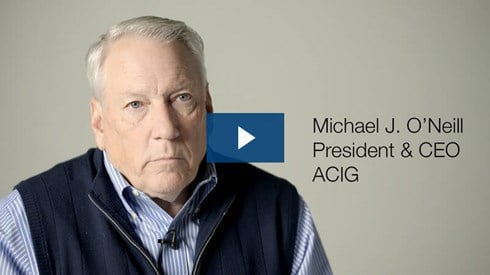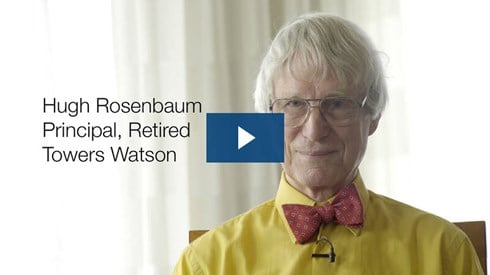What Are Association and Group Captives?


A captive insurer is an insurance company that is wholly owned and controlled by its insureds; its primary purpose is to insure the risks of its owners, and its insureds benefit from the captive insurer's underwriting profits. Single-parent captives have only one owner. Group captives, on the other hand, are formed when a group of individuals or entities comes together to jointly own a captive insurance company. Sometimes they are sponsored by industry associations for the benefit of their members, hence the alternative name "association captive."
Why Join a Group Captive?
Like single-owner captive insurers, group captive insurers offer the key benefits of pricing stability, insurance coverage stability, and improved services. However, the use of group captives is feasible for organizations that do not have adequate capital resources to form their own single-parent captive. Other benefits of the group captive approach are examined below.
Improved Loss Forecasting and Greater Risk Retention Potential
Given the law of large numbers, overall claim experience can be predicted with a higher degree of confidence for a group captive insurer than if a single organization's exposures were being covered. Reduced variation in loss levels allows group captives to assume greater retentions, a fact that will ultimately lower the long-run cost of insuring the group's risks. Additionally, because the range of probable losses is narrower in a group captive, lower levels of combined surplus are required to operate.
Mass Purchasing Power
Group captives can obtain services and reinsurance more cost-effectively than if each member of the group attempted to obtain such services and reinsurance by itself.
Reduced Overhead
General management overhead is reduced in a group captive insurer due to economies of scale. The per-member cost of administering a group captive is decidedly lower than if the identical coverage is obtained in a single-owner arrangement.
More Appropriate Treatment of Special Insurance Needs
A group captive can offer insurance coverage specifically tailored to certain high-risk industries or professions that would otherwise be nearly impossible for a relatively small single-owner captive to write. Examples of such industries and professions include contractors, physicians, hazardous waste disposal companies, and pharmaceutical manufacturers.
If it has adequate capitalization, a group captive insurance company also has the ability to retain higher levels of risk than each of its members could retain on a stand-alone basis. Likewise, group captives can sometimes provide catastrophic coverage limits that commercial markets are unwilling or unable to offer.
Increased Loss Control Emphasis
The group captive structure imposes a sharing of losses on its members. This ultimately produces peer pressure and healthy competition among the members to enforce safety practices and control claims. No member wants to feel as if it is generating more than its "fair share" of claim expenses. Participants in a group captive might find themselves voted out, nonrenewed, or canceled if they cannot live up to the group's loss control standards.
In some domiciles, captives are allowed to use a protected cell company (or segregated cell company) structure. Under this arrangement, each participant's assets and liabilities remain separate, and there is actually no risk sharing and no exposure to creditors of other participants. The participants still have access to the specialized loss control and other services that group captives enjoy, but they do not have to worry about the negative impact of another participant's poor experience. One downside to the protected cell arrangement is that risk sharing is a necessary condition for the deductibility of premiums in the United States.
Retention and Return of Profits in a Cost-Effective Manner
The majority of group captive insurance companies pay dividends or otherwise distribute underwriting profits and interest to their owners or insureds. Depending upon how the captive program has been set up, the group captive can be financially advantageous, as compared to a noninsurance risk retention program or commercial insurance.
Problems Inherent in Group Captives
Because they have multiple owners, group captives are subject to a number of potential difficulties that do not plague their single-owner counterparts. These disadvantages are noted under the following headings.
Differing Member Needs
Group captives can be formed by either a homogeneous or a heterogeneous group of insureds. In a homogeneous group, the member/owners are engaged in the same or similar industries. However, this does not ensure that all of the members have the same coverage needs. This is especially true when members operate in different areas of the country, are of varying sizes, have different ownership structures (e.g., a publicly owned firm versus one that is privately held), or are engaged in slightly different aspects of the same basic industry (e.g., a contracting firm that specializes in single-family residential construction versus one that builds office buildings).
It is impossible to design a one-size-fits-all captive. There will be unavoidable differences of opinion as respects necessary limits, breadth of required coverage, reasonable retention amounts, and other matters.
Formation/Capitalization Delays
As the number of potential members of a group captive increases, the time required to form and capitalize the venture will increase proportionately. It can take years to convince potential members that there is no better option. It is not unusual for a new group captive to go through the first few years with only a fraction of the participants that were anticipated.
Decision-Making Problems
Once a group captive has been established, the differing needs of its members may make it difficult to reach consensus on operational issues.
Rating and Cost Allocation Controversies
Honest differences of opinion may arise between members as respects the rating process. Depending on the rating plan that is devised, some members will fare significantly better or worse than others.
Potential Higher Costs
A group captive insurer's initial costs are usually higher than traditional loss funding alternatives. Further, participation in a group captive might require an initial capital contribution from each member. Captive participants must keep the long-term goals of stable pricing and availability of coverage in mind. Their commitment should not be swayed by swings in the insurance market cycle.
Profits and Earnings Distribution Conflicts
Another major area of potential disagreement pertains to the distribution of underwriting profits and earnings that accumulate on those profits. Many problems are avoided when a predetermined earnings distribution plan is in place before the captive begins to operate.
Reduced Degree of Confidentiality
Potential group captive members are required to divulge a substantial amount of financial information. Most small business owners prefer to keep this information confidential. Accordingly, consultants and others are often required to enter into nondisclosure arrangements, in which they agree to treat the information as confidential, using it strictly for the purposes of assessing the captive.
Additional Management Time
Volunteer management on boards and committees is one of the reasons group captives' costs can be kept low, but in exchange, this requires the volunteers to expend their time and effort to manage the captive.
Different Growth Rates of Owners
When a group captive is initially created, the members/owners arrive at a consensus on the retention levels and amount of risks insured. Over time, different members may grow much larger and desire higher retentions and/or coverage amounts. The members that have not experienced the same level of growth will be reluctant to make these changes.
Potential Withdrawal of Participants
Group captives face the threat of potential large-scale capital withdrawal by their members. Of course, this could severely impair the captive's continued financial well-being. Accordingly, when group captives are formed, clear and unambiguous procedures must be developed for dealing with these circumstances. Generally, it is best if withdrawal formulas impose significant penalties for owners who decide to leave prematurely.
Potential Tax Problems
When comparing group captives to conventional loss funding programs, captives may appear to represent the better opportunity to deduct the premiums from federal income taxes. This is especially true when comparing a group captive to a typical large deductible plan. However, unless the captive is able to withstand the Internal Revenue Service's test regarding risk shifting and distribution, premium tax deductibility could be in jeopardy. Group captives also present additional tax issues.
Deciding If a Group Captive Is Workable
A number of crucial factors should be considered when deciding whether to participate in a group captive. Among the most important questions are the following.
- Who controls the facility, and are there any conflicts of interest?
- Are there any provisions for the withdrawal of participants and the entry of new participants?
- What is the minimum required participation time?
- How are premiums determined?
- What, if any, risk control efforts does the facility require of participants?
Once these and other questions are answered and the decision to participate in a captive is made, each member/owner must continue its commitment to ensure the captive remains truly workable.
This article is based on information in Risk Financing , Section IV, The Alternative Market.

